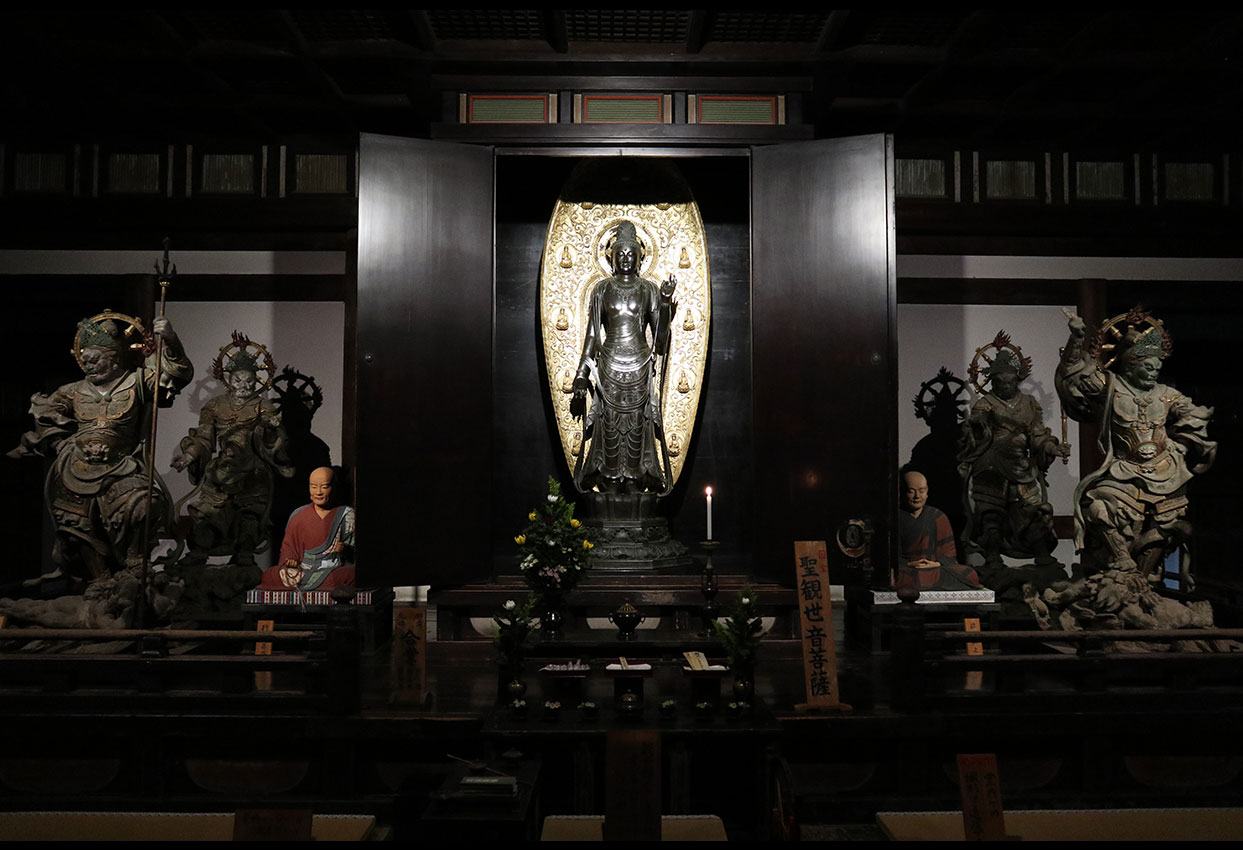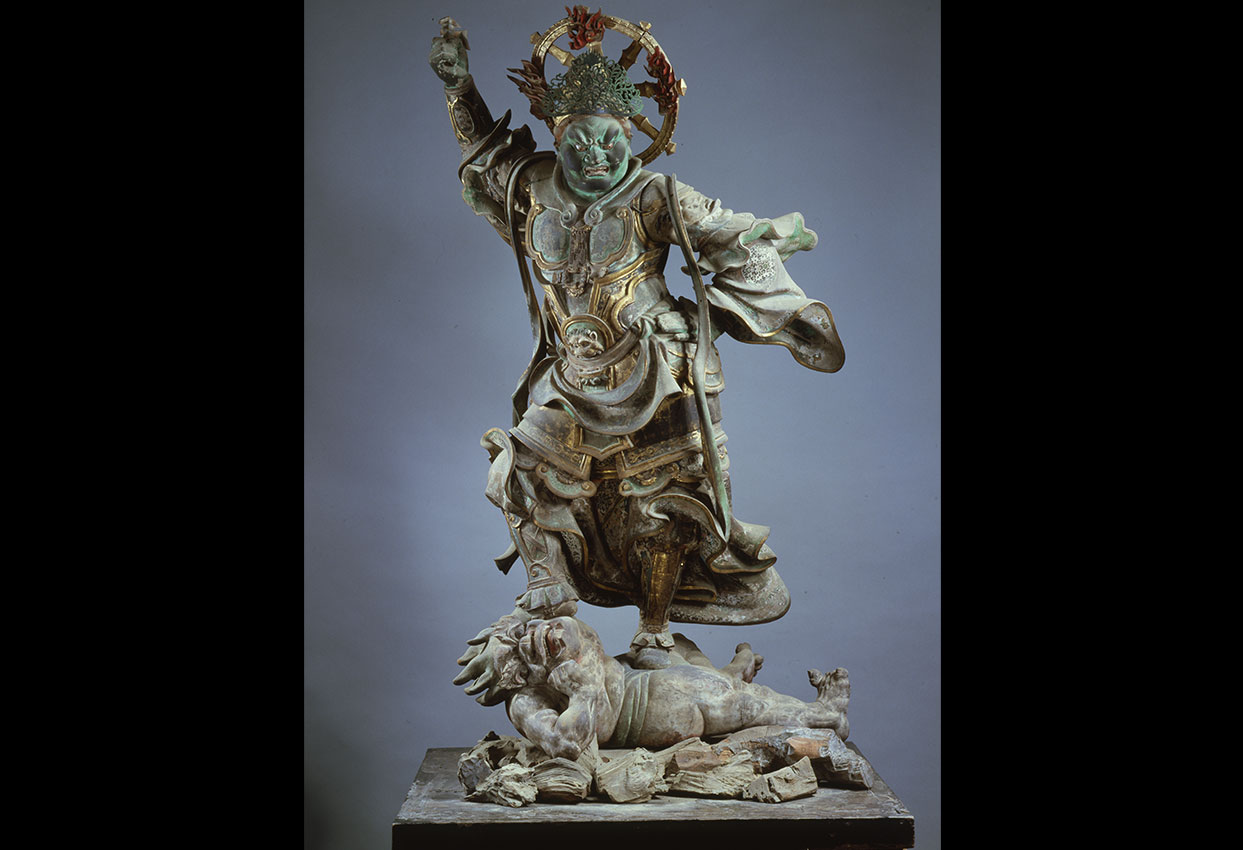13. Sho-Kanzeon Bosatsu Statue
Inside the East Hall stands a statue of Kannon (also known as Kanzeon), the bodhisattva (bosatsu) of mercy. Kannon is sometimes depicted in extraordinary forms, with 11 faces or 1,000 hands, but this statue has a simpler, more natural appearance. Hair flows over shoulders, while bodily movement, even the folds of flesh around the neck, seem almost tangible. This National Treasure is said to be one of the most beautiful Kannon statues in Japan.
The “kan” in Kannon refers to a supernatural power that permits the seeing and hearing of what is normally invisible and inaudible. Kannon is often spoken of as the bodhisattva who employs this power to see and hear all beings on earth with compassion, coming to them in times of need.
The Sho Kanzeon Bosatsu inside the East Hall (“Sho” meaning “sacred”) dates back to the Hakuho period (645–710) and incorporates characteristics that suggest foreign influences. For example, the thin, sari-like robe of the image reveals the contours of the legs and makes the feet and ankles clearly visible. Such details are reminiscent of Avalokitesvara images found in India. In fact, many statues at Yakushiji display a greater leaning toward Indian forms than is found at other Nara temples. No record remains of who crafted the Sacred Kannon or other statues at Yakushiji, though some believe they may have been based on artifacts brought to Nara from Buddhist realms such as India or Sri Lanka.



